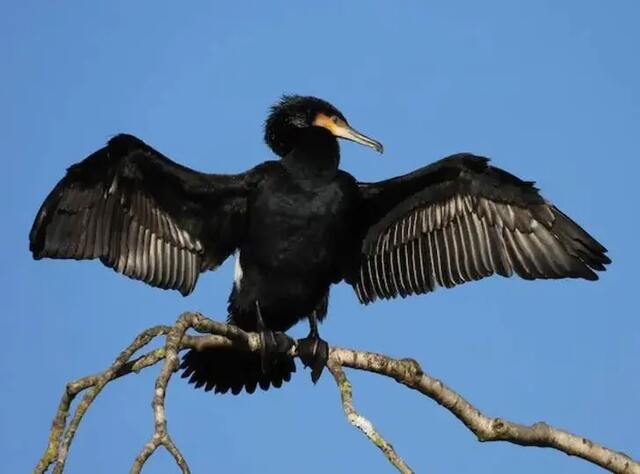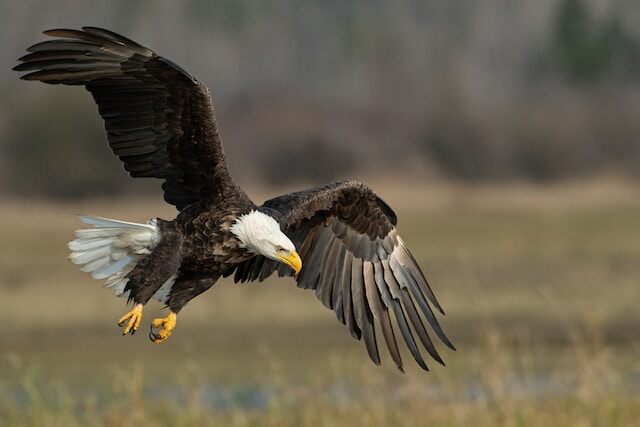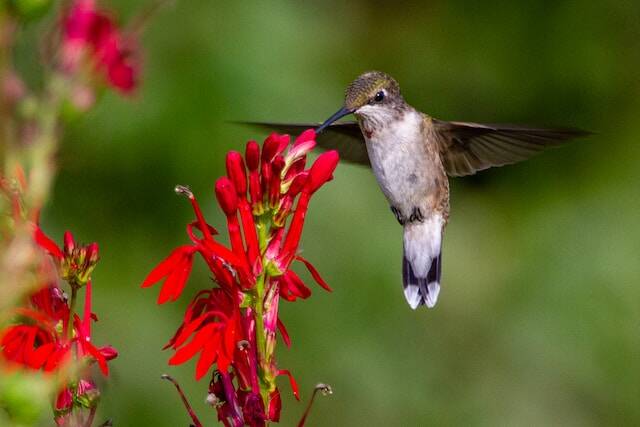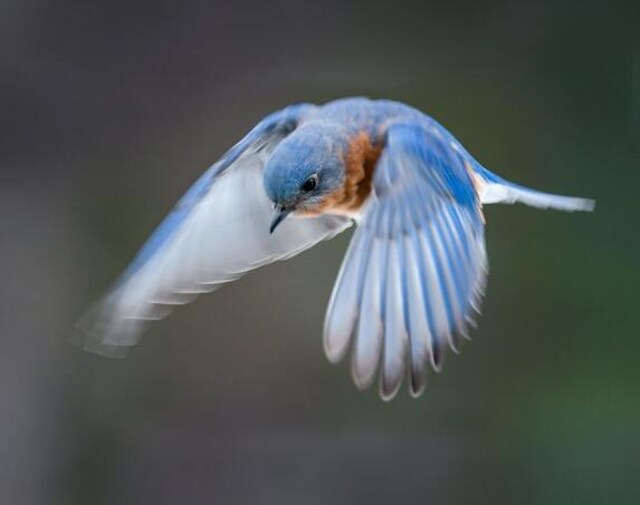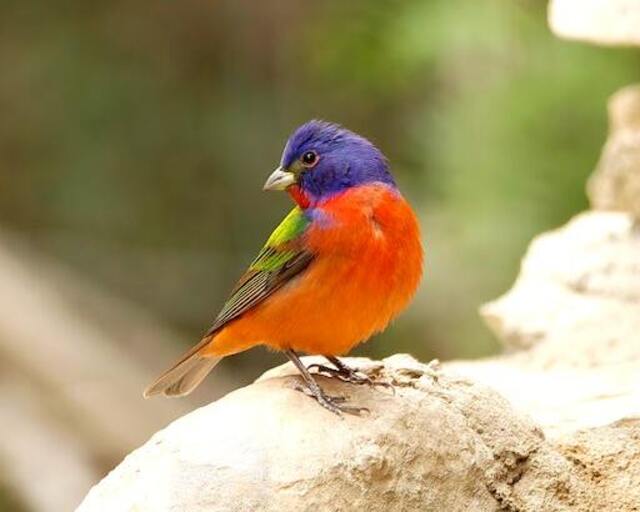Ever wondered, how are wings an adaptation for birds? Wings are one of the most important evolutionary traits birds possess, allowing them to fly, glide, escape predators, and hunt for food. But their function goes beyond flight, wings also help birds regulate temperature, perform mating displays, and even communicate. In this article, we’ll explore the many ways wings help birds survive and thrive in the wild.
Table of Contents
- 1 Key Takeaways:
- 2 How Are Wings An Adaptation For Birds?
- 3 The Function of Bird Wings
- 4 Adaptive Characteristics of Bird Wings
- 5 The Evolution of Bird Wings
- 6 Bird Wing Anatomy
- 7 How Birds Soar through the Skies
- 8 Wings as a Survival Strategy
- 9 Wings in Various Environments
- 10 The Influence of Wing Shape on Flight
- 11 Wing Adaptations in Different Bird Species
- 12 Environmental Threats to Bird Wings
- 13 Conclusion
- 14 FAQs: How Are Wings An Adaptation For Birds?
- 14.1 How are wings an adaptation for birds?
- 14.2 What is the primary function of bird wings?
- 14.3 What are some adaptive characteristics of bird wings?
- 14.4 How have bird wings evolved over time?
- 14.5 What is the anatomy of bird wings?
- 14.6 How do birds soar through the skies?
- 14.7 What is the significance of wings as a survival strategy for birds?
- 14.8 How have wings adapted to various environments?
- 14.9 What is the influence of wing shape on bird flight?
- 14.10 What are some examples of wing adaptations in different bird species?
- 14.11 What are some environmental threats to bird wings?
- 15 Author
Key Takeaways:
- ✅ Wings are essential for flight – Birds rely on wings to fly, glide, and soar.
- ✅ Adapted for survival – Wings help birds escape predators and hunt efficiently.
- ✅ More than just flying – Wings assist in temperature control and courtship displays.
- ✅ Different birds, different wings – Wing shapes vary depending on habitat & lifestyle.
- ✅ A key evolutionary trait – Wings are a major reason birds thrive in diverse environments.
How Are Wings An Adaptation For Birds?
Wings are a crucial adaptation for birds, as they allow them to fly and access resources that would otherwise be out of reach. The structure of a bird’s wing is highly specialized, with feathers providing lift and control while the bones and muscles work together to generate the necessary forces for flight.
Additionally, birds’ wings are often adapted to their specific environment and lifestyle, with some species having long, pointed wings for soaring and others having short, rounded wings for maneuvering in dense forests or other tight spaces.
Overall, wings are a key feature of birds’ anatomy and have played a critical role in their evolution and success as a group.
The Function of Bird Wings
While birds use their wings for various purposes, their primary function is flight. In order for a bird to fly, its wings must produce lift, thrust, and maneuverability. The structure of bird wings has evolved over time to serve this purpose, allowing them to take to the skies with impressive agility and grace.
The basic structure of a bird wing consists of three main parts: the upper arm bone, the forearm bone, and the hand, which contains the primary flight feathers. These feathers are crucial to flight, as they provide lift and maneuverability. The shape and arrangement of the feathers on the wing play a significant role in aerodynamics, enabling birds to control their speed and direction while in flight.
The Four Functions of Bird Wings
There are four main functions of bird wings: lift, thrust, maneuverability, and stability.
| Function | Description |
|---|---|
| Lift | The shape and arrangement of feathers on the wing produce lift, allowing birds to rise and stay aloft. |
| Thrust | The downward motion of the wing produces thrust, propelling the bird forward. |
| Maneuverability | The shape and angle of the wing allow for precise control of the bird’s movement while in flight. |
| Stability | The design of the wing allows for stable flight, preventing the bird from rolling, pitching, or yawing uncontrollably. |
Each of these functions is essential to a bird’s ability to fly, and the unique structure and adaptations of bird wings enable them to fulfill these functions with remarkable efficiency.
Adaptive Characteristics of Bird Wings
One of the most remarkable features of bird wings is their incredible adaptability. The shape, size, and feather structure of bird wings have evolved to suit a wide variety of environments and purposes.
Firstly, the shape of a bird’s wing is crucial in determining its flight characteristics. Some birds have broad, rounded wings that provide lift for soaring, while others have long, narrow wings that enable quick and agile flight. For example, the wings of a northern goshawk are short and broad, allowing it to maneuver quickly through dense forests, while the wings of an albatross are long and narrow, making it an efficient glider over long distances.
The size of a bird’s wing is another important adaptation that varies by species. Generally, larger wings are better suited for long flights and gliding. This is seen in birds like swans and eagles, whose wingspan can reach up to 10 feet, allowing them to soar effortlessly through the air. In contrast, birds like hummingbirds have relatively small wings, which are better suited for hovering and rapid movement.
Finally, the arrangement of feathers on a bird’s wing is a critical adaptation that affects its aerodynamics and flight capabilities. A bird’s feathers are arranged in a precise pattern that helps to reduce turbulence and increase lift. The feathers at the end of the wing, known as primary feathers, can be individually adjusted to change the shape and angle of the wing, allowing the bird to make fine adjustments to its flight path.
Types of Feathers on Bird Wings
Bird wings are made up of several different types of feathers, each with its own unique function. The primary feathers are the largest and most important feathers for flight, as they provide lift and control.
Secondary feathers are located towards the back of the wing and help to support the primary feathers. Covert feathers are the small feathers that cover the base of the primary and secondary feathers, providing a smooth surface for air to flow over.
Altogether, the adaptive characteristics of bird wings are a remarkable example of natural selection at work. The unique shape, size, and feather structure of each species’ wings have evolved over millions of years to optimize their survival in a dynamic and ever-changing world.
The Evolution of Bird Wings
Bird wings have undergone numerous adaptations over millions of years to become the efficient and powerful structures they are today. The earliest known bird, Archaeopteryx, had wings that closely resembled those of modern birds, indicating that wings were a crucial adaptation for the survival of avian ancestors.
Over time, wings have evolved into various shapes and sizes to suit different environments and lifestyles. For example, the wings of flightless birds like ostriches and emus have become smaller and more rudimentary, allowing them to run efficiently on the ground. On the other hand, the wings of raptors and seabirds have become longer and more pointed, maximizing their ability to fly and maneuver in the air.
Another crucial aspect of wing evolution is the development of feather structure, which has helped birds achieve lift, stabilize their flight, and maintain body temperature. The evolution of wing feathers has allowed birds to become more efficient flyers, enabling them to travel longer distances and access new food sources.
The Emergence of Powered Flight
One of the most significant adaptations in bird wing evolution was the emergence of powered flight. Powered flight enabled birds to travel long distances, escape predators, and gain access to new habitats and resources.
The evolution of powered flight likely occurred in small, feathered theropod dinosaurs, who were able to take advantage of the lift generated by their feathers to achieve short bursts of flight. Over time, these theropods evolved into more sophisticated flying animals, eventually giving rise to the diverse array of birds we see today.
In summary, the evolution of bird wings has been a complex and ongoing process that has allowed birds to become some of the most successful and adaptable creatures on the planet. From the development of lift-generating feathers to the emergence of powered flight, every aspect of wing evolution has been crucial to the survival and success of birds.
Bird Wing Anatomy
The anatomy of bird wings is a marvel of evolution, finely tuned for aerodynamic performance, stability, and control. The following is an overview of the main components that comprise a bird’s wings:
| Component | Description |
|---|---|
| Bones | The bones of a bird’s wing are highly modified, consisting of a humerus, radius, ulna, carpals, metacarpals, and phalanges. These bones are fused together and hollow, making them lightweight yet incredibly strong. |
| Muscles | Birds have powerful pectoral muscles that drive the downstroke of the wing, as well as smaller muscles that control the flapping motion and feather movement. |
| Feathers | Feathers are critical to the function of bird wings. Flight feathers on the wings and tail are large, stiff, and asymmetrical, providing lift and maneuverability. Contour feathers cover the rest of the wing, providing insulation, streamlining, and structural support. |
| Wing slots | Some birds have wing slots or “slots” between their primary feathers. Slots help stabilize the airflow over the wing, reducing turbulence and increasing lift. |
The arrangement of feathers on a bird’s wing is also essential. The camber or curvature of the wing, combined with the angle of attack and the speed of airflow, generates lift and allows birds to maintain altitude and maneuver in the air. The shape of the wing can vary significantly between bird species, reflecting differences in flight style and ecological niche.
Overall, the anatomy of bird wings is a marvel of engineering, optimized for flight in a wide variety of environments and conditions.
How Birds Soar through the Skies
Birds have evolved a remarkable ability to fly, allowing them to travel across vast distances and access food sources that would otherwise be unreachable. But how do they manage to stay aloft for so long, and what adaptations have allowed them to soar through the skies with such ease?
One of the primary factors that enable birds to fly is their lightweight body structure, with bones that are hollow and filled with air sacs. This makes them much lighter than most other animals, allowing them to take off and stay in the air for extended periods without expending too much energy.
Another key factor is their wing structure, which allows for a range of different flight patterns and behaviors. For example, many birds have long, narrow wings that are ideal for soaring and gliding, while others have shorter, broader wings that provide more lift and maneuverability.
One of the most fascinating adaptations that birds have developed for flight is their ability to manipulate their feathers. By flexing and twisting their wings, they can control the shape and position of their feathers, adjusting their speed and direction of flight as needed.
Additionally, many birds have specialized respiratory systems that allow them to extract oxygen more efficiently, which is crucial for sustained flight at high altitudes. Birds also have a unique circulatory system, with specialized adaptations that allow them to maintain a high metabolism and generate more energy for flight.
Lastly, birds have developed a range of behaviors and adaptations that allow them to optimize their flight strategies depending on their environment. Some birds, for example, use thermal currents to gain altitude and travel long distances without expending too much energy. Others have developed specialized techniques for hunting or finding food, such as diving underwater or hovering in the air to locate prey.
Overall, the ability of birds to soar through the skies is a testament to the incredible adaptations and evolutionary processes that have shaped their physiology and behavior. By understanding how these adaptations work, we can gain a deeper appreciation for the complexity and diversity of the natural world around us.
Wings as a Survival Strategy
For birds, having wings is not just about flight, it is also a crucial survival strategy. Wings allow birds to access food sources, avoid predators, and migrate for better living conditions.
One important adaptation of wings is their size. Birds that live in open environments, like prairies and deserts, tend to have longer wings, which allow them to soar longer distances and ride updrafts. In contrast, birds that live in forests or other cluttered environments have short, rounded wings that allow them to maneuver more easily between trees and other obstacles.
Feathers are another essential component of wings and provide insulation for regulating body temperature, waterproofing for swimming, and camouflaging for hiding from predators. In addition, feathers also allow for precise flight control, which is necessary for bird species that hunt while in flight, such as eagles and falcons.
Migration is another important aspect of bird survival that is enabled by wings. Birds that migrate long distances, such as swallows and geese, have strong wings capable of enduring exhausting flights over vast distances. These wings are built for endurance, with an efficient shape that reduces drag and conserves energy.
However, wings, being so important to bird survival, are also threatened by environmental factors such as pollution, habitat loss, and climate change. These factors can result in changes to habitat and food supplies, reducing the chances of survival for birds with weakened wings.
In conclusion, wings are not just an incredible adaptation for bird flight but are also fundamental for bird survival and their ability to thrive in different environments. It is important that we continue to protect bird habitats and support conservation efforts to ensure that these remarkable creatures can continue to spread their wings.
Wings in Various Environments
Bird wings have adapted to thrive in a range of environments, allowing them to travel across vast distances and explore diverse landscapes. In different habitats, birds have evolved specific wing adaptations to perform at optimum levels.
In deserts, birds such as the sandgrouse have long, pointed wings, which enable them to glide with minimal effort and conserve energy in a region where resources are scarce. Conversely, in forests, birds like the scarlet macaw have broad, rounded wings, which provide greater maneuverability and control in tight spaces.
| Environment | Adaptation | Bird Species |
|---|---|---|
| Deserts | Long, pointed wings | Sandgrouse |
| Forests | Broad, rounded wings | Scarlet Macaw |
| Aquatic habitats | Streamlined wings with waterproof feathers | Albatross |
Some birds, such as sea birds like the albatross, have adapted their wings to function in aquatic habitats. They have streamlined wings with waterproof feathers, allowing them to glide above the surface of the water with ease.
By adapting wings to suit specific environments, birds have been able to survive and thrive in a vast array of habitats. This remarkable diversity of wing adaptations highlights the unique evolution of birds and their ability to adapt to changing environments.
The Influence of Wing Shape on Flight
Wing shape is a crucial factor in determining a bird’s flight performance and efficiency. The shape of a bird’s wing is determined by the arrangement of its feathers and the structure of its bones and muscles. The three primary factors that influence wing shape are aspect ratio, wing loading, and camber.
| Aspect Ratio | Wing Loading | Camber |
|---|---|---|
| Aspect ratio is the ratio of the length of a bird’s wing to its width. | Wing loading is the ratio of a bird’s body weight to the surface area of its wings. | Camber refers to the curvature of a bird’s wing, which affects its lift and drag. |
| Long, narrow wings with a high aspect ratio, such as those of falcons and gulls, are designed for soaring and high-speed flight. | Birds with a high wing loading, such as eagles and hawks, have strong muscles that enable them to fly for extended periods and carry heavy prey. | Wings with a pronounced camber, like those of swans and geese, generate more lift and are ideal for slow, powerful flight. |
| Short, rounded wings with a low aspect ratio, like those of sparrows and wrens, are designed for maneuverability and rapid flight. | Birds with a low wing loading, such as pigeons and doves, are agile flyers capable of quick turns and dives. | Wings with a flat camber, like those of swifts and swallows, are designed for fast, efficient flight and maneuverability. |
The shape of a bird’s wings has evolved over millions of years to optimize their aerodynamic performance in specific environments and activities. From the long, pointed wings of eagles, falcons, and gulls to the broad, rounded wings of sparrows, hummingbirds, and swifts, the diversity of wing shapes in the avian world is a testament to the incredible adaptability of birds.
Wing Adaptations in Different Bird Species
The incredible diversity of bird species has resulted in a wide variety of wing adaptations. Each bird has evolved specific wing characteristics that optimize their flight performance for their unique environments and behaviors.
One example is the albatross, which has the largest wingspan of any bird, reaching up to 11 feet. This allows them to efficiently soar over the open ocean for days at a time. In contrast, hummingbirds have very small wings relative to their body size. This allows them to hover in place and dart quickly through dense vegetation to access nectar sources.
Another notable example is the falcon, which has pointed wings that enable extreme speed and agility for hunting prey in mid-air. In contrast, the owl has large, rounded wings that allow for silent flight and precision in capturing prey at night.
| Bird Species | Wing Adaptation |
|---|---|
| Albatross | Large wingspan for long-distance flight |
| Hummingbird | Small wings for hovering and maneuverability |
| Falcon | Pointed wings for speed and agility during mid-air hunting |
| Owl | Rounded wings for silent flight and precision in capturing prey at night |
Even within the same bird family, there can be significant differences in wing adaptations. For example, the woodpecker family includes both ground-dwelling species with short, rounded wings for quick bursts of flight, and tree-dwelling species with longer, pointed wings for precise aerial maneuvers around trees.
The diversity of bird wing adaptations highlights the incredible versatility and adaptability of this essential feature.
Environmental Threats to Bird Wings
Bird wings have evolved over millions of years to provide efficient and effective flight, allowing birds to access resources and avoid predators. However, in recent times, bird wings have faced numerous environmental threats that endanger their survival.
One of the most significant threats to bird wings is habitat loss. As natural habitats are destroyed by human activities such as deforestation, birds lose access to the resources they need to survive. Without adequate food and shelter, bird populations can decline, and the adaptations that enable them to fly may become less beneficial.
Pollution is another major threat to bird wings. Pollutants such as oil and chemicals can make feathers less waterproof, making it more challenging for birds to fly efficiently. Air pollution from factories and vehicles can also damage respiratory systems, making it more difficult for birds to breathe and fly.
Climate change is also impacting bird wings. Changes in temperature and rainfall patterns can alter the migration routes of birds, making it more challenging for them to find suitable habitats. Rising sea levels can also impact coastal bird populations by reducing the availability of nesting sites and food sources.
As humans continue to exert pressure on the environment, it is essential to recognize the importance of bird wings for the survival of avian species. Protecting natural habitats, reducing pollution, and addressing climate change are crucial steps in preserving the adaptations that have enabled birds to fly for millions of years.
Conclusion
The evolution of bird wings and their unique adaptability have allowed birds to soar through the skies, access food sources, migrate, and avoid predators. The structure of bird wings, including their bones, muscles, and feather arrangement, has optimized their flight performance for specific purposes and environments.
Despite the incredible diversity of avian flight, the environmental threats that impact bird wings, such as pollution, habitat loss, and climate change, continue to pose a significant challenge. It is essential to acknowledge and address these threats to ensure the survival of these remarkable creatures.
In conclusion, wings are a crucial adaptation for birds, enabling them to thrive and survive in various environments. Understanding the intricate mechanisms of bird flight and their unique wing adaptations can enlighten us about the wondrous world of avian species and their incredible capabilities.
FAQs: How Are Wings An Adaptation For Birds?
How are wings an adaptation for birds?
Wings are an adaptation for birds that allow them to fly and navigate through their environments. Birds have evolved wings with unique structures such as feathers, muscles, and specialized bones to enable powered flight.
What is the primary function of bird wings?
The primary function of bird wings is to provide lift and generate thrust for flight. Wings enable birds to soar through the air, hunt for food, escape predators, and migrate long distances.
What are some adaptive characteristics of bird wings?
Bird wings have adapted to various environments through characteristics such as shape, size, and feather structure. These adaptations contribute to efficient flight, maneuverability, and survival in different habitats.
How have bird wings evolved over time?
Bird wings have evolved over millions of years, gradually developing from ancestral reptilian forelimbs. Evolutionary changes have resulted in more sophisticated wing structures, enabling birds to achieve greater flight capacities and adapt to new ecological niches.
What is the anatomy of bird wings?
The anatomy of bird wings includes bones, muscles, and feathers. The bones provide a rigid structure, while the muscles allow birds to move their wings. Feathers play a vital role in flight, providing lift and control.
How do birds soar through the skies?
Birds soar through the skies by utilizing flight adaptations such as wing shape, wing flapping, and air currents. These adaptations enable birds to achieve different flight styles, including gliding, soaring, and agile maneuvers.
What is the significance of wings as a survival strategy for birds?
Wings are a crucial survival strategy for birds as they allow access to food sources, evasion of predators, and long-distance migration. Birds that are unable to fly or have impaired wings face significant challenges in their survival and reproduction.
How have wings adapted to various environments?
Wings have adapted to various environments in different bird species. Adaptations may include longer wings for soaring in open spaces, shorter wings for maneuverability in forests, and specialized adaptations for flight in aquatic habitats.
What is the influence of wing shape on bird flight?
Wing shape greatly influences bird flight performance. Different wing shapes, such as long and narrow wings or broad and rounded wings, optimize flight for specific purposes such as speed, agility, or soaring ability.
What are some examples of wing adaptations in different bird species?
Examples of wing adaptations in different bird species include the elongated wings of albatrosses for long-distance oceanic flights, the wings of hummingbirds for hovering and rapid maneuvering, and the powerful wings of raptors for hunting and soaring.
What are some environmental threats to bird wings?
Bird wings face environmental threats such as habitat loss, pollution, and climate change. These threats can disrupt the availability of food sources, alter flight patterns, and impact overall bird populations.


